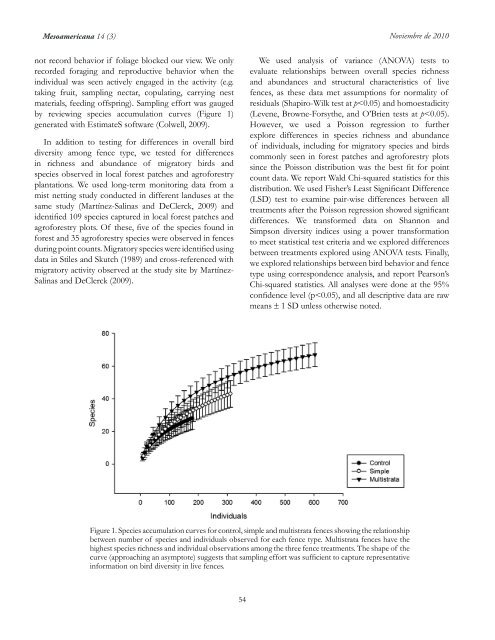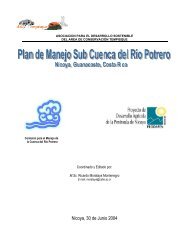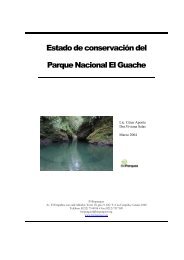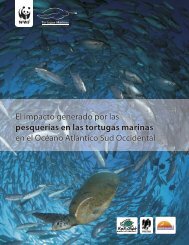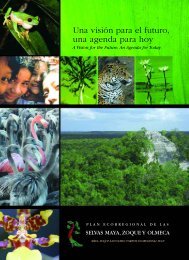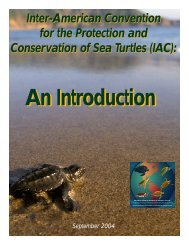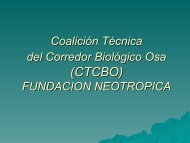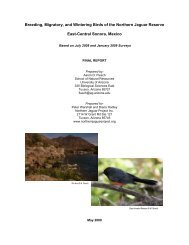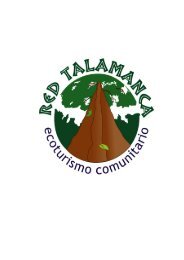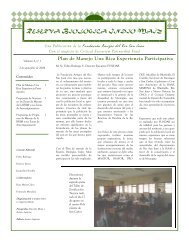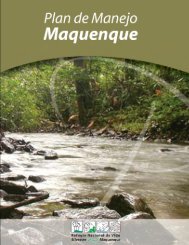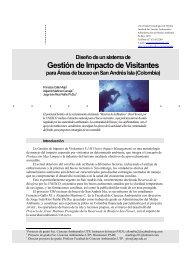Volumen 14(3) Noviembre de 2010 - Eco-Index
Volumen 14(3) Noviembre de 2010 - Eco-Index
Volumen 14(3) Noviembre de 2010 - Eco-Index
Create successful ePaper yourself
Turn your PDF publications into a flip-book with our unique Google optimized e-Paper software.
Mesoamericana <strong>14</strong> (3) <strong>Noviembre</strong> <strong>de</strong> <strong>2010</strong>not record behavior if foliage blocked our view. We onlyrecor<strong>de</strong>d foraging and reproductive behavior when theindividual was seen actively engaged in the activity (e.g.taking fruit, sampling nectar, copulating, carrying nestmaterials, feeding offspring). Sampling effort was gaugedby reviewing species accumulation curves (Figure 1)generated with EstimateS software (Colwell, 2009).In addition to testing for differences in overall birddiversity among fence type, we tested for differencesin richness and abundance of migratory birds andspecies observed in local forest patches and agroforestryplantations. We used long-term monitoring data from amist netting study conducted in different landuses at thesame study (Martínez-Salinas and DeClerck, 2009) andi<strong>de</strong>ntified 109 species captured in local forest patches andagroforestry plots. Of these, five of the species found inforest and 35 agroforestry species were observed in fencesduring point counts. Migratory species were i<strong>de</strong>ntified usingdata in Stiles and Skutch (1989) and cross-referenced withmigratory activity observed at the study site by Martínez-Salinas and DeClerck (2009).We used analysis of variance (ANOVA) tests toevaluate relationships between overall species richnessand abundances and structural characteristics of livefences, as these data met assumptions for normality ofresiduals (Shapiro-Wilk test at p


